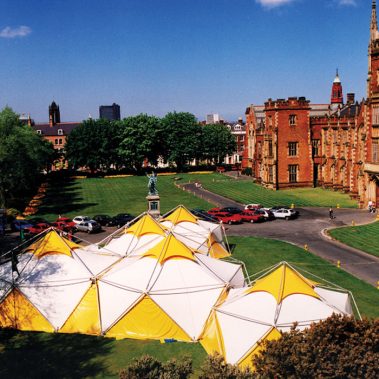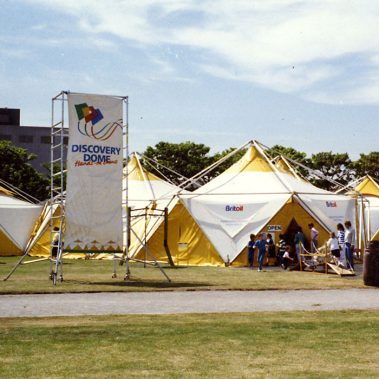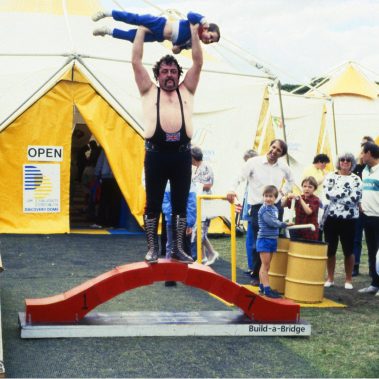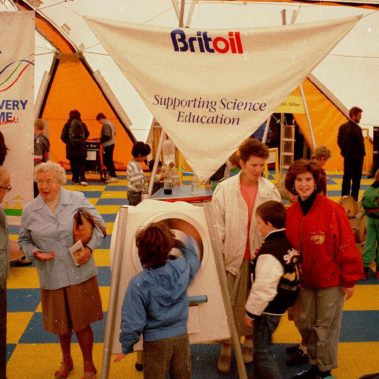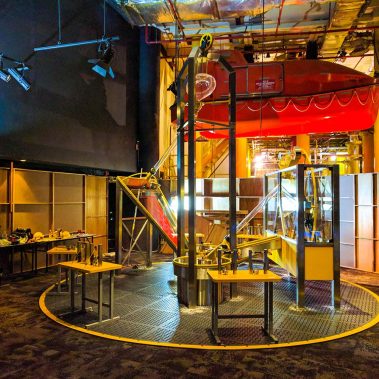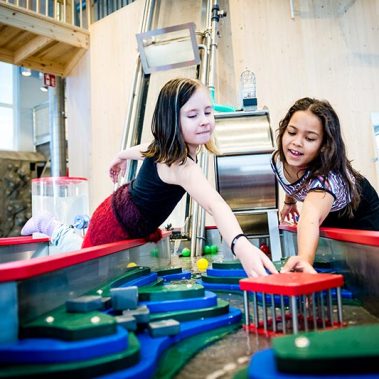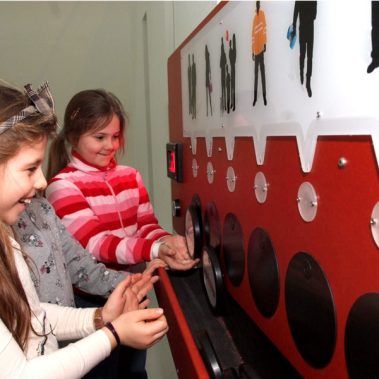Although Science Projects is probably best known as a designer and fabricator of interactive exhibitions, it actually has its origins as a science centre back in 1988, when Stephen Pizzey set up the ‘Discovery Dome’ – Britain’s first travelling interactive science centre.
The Ontario Science Centre in Canada had already instigated its ‘Science Circus’ which had travelled to a number of countries, including a visit to the Science Museum in London. It proved extremely popular but was still constrained by being an exhibition which required a museum or other venue in which to operate. What made Science Projects’ idea different was the thought that it would be much more interesting to have the building travel with the exhibition as well.
Deciding to test out the theory, a system of tents was hired and exhibits from the Exploratory in Bristol (now At-Bristol) were borrowed for an open day in the UK in 1988. The result was a huge success and provided the impetus to take the next step.
